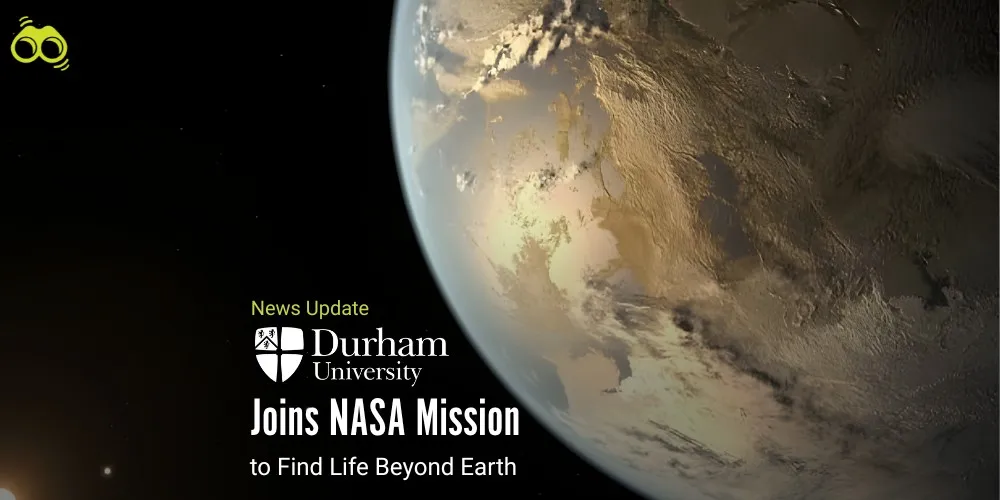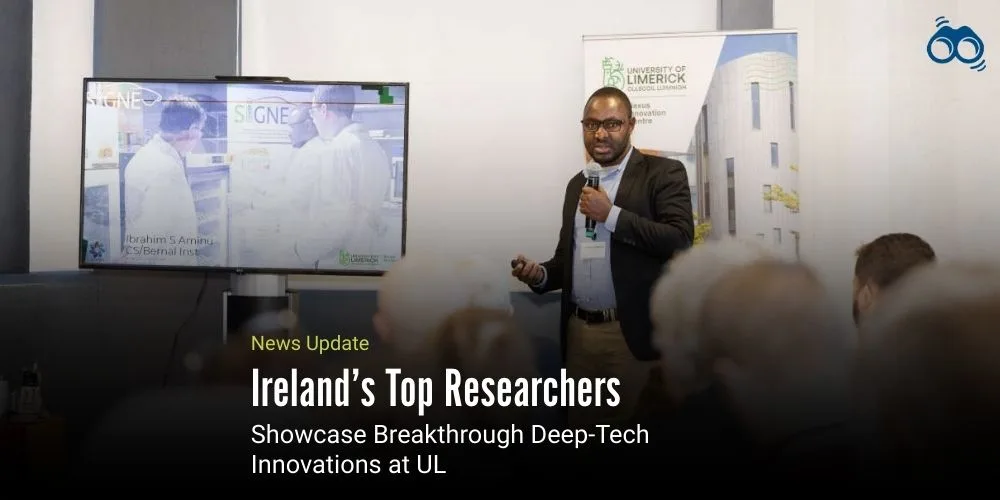Durham University Contributes to High-Resolution Imaging for NASA’s Next-Generation Space Telescope
UK Scientists Collaborate on NASA’s Habitable Worlds Observatory to Detect Earth-like Planets
Space exploration has only reached the point of mere voyeurism at best. Scientists want to know beyond doubt if life exists on extraterrestrial rocky worlds similar to our own. But these worlds are difficult to study because, like the clumsy and much-inhabited child of a peculiar flaming star, even the closest bright stars wash the skies with their brilliant light; scarcely any ground- or space-based telescope worth its salt can detect them at present.
Thus, NASA is designing the Habitable Worlds Observatory (HWO) to cope with these difficulties. It is based on modern imaging techniques; one of its devices is a coronagraph, which will block starlight and allow the direct observation of rocky planets for the first time. These may be the worlds harbouring the very clues of life that up to now have eluded our eyes.
One further serious obstacle continues: mass measurement and atmospheric study of the planet, which are both of great importance in identifying whether a given celestial body is hospitable to life. The new high-resolution imaging camera being constructed for HWO is intended to acquire such data at a resolution and level of detail never achieved hitherto.
Apart from life detection, the mission for NASA will also investigate the strangest things in the universe: black holes, asteroid collisions, and dark matter. Thus, seeing these newly found worlds is not even the main objective of this mission, for it seeks to answer some of the biggest questions in science today.
The mission has been planned to launch sometime in the early 2040s as the first telescope intended primarily for finding rocky Earth-like planets and signs of life. In this international collaboration, researchers from Durham University in the UK join experts from across the world to develop imaging technologies that could resolve distant worlds in a far more detailed way than has hitherto been possible.
Professor Richard Massey from Durham characterised the new imaging device as the "Hubble Space Telescope of the 21st Century," noted the university news. In addition to searches for life, the telescope will be used to research collisions of asteroids, study black holes, and feed into other mysteries such as dark matter. This iconic structure allows Durham University to work with NASA and pave the path towards major scientific triumph through the advanced technology of space.
The telescope will specifically use a unique instrument known as a coronagraph. Scientists can now see rocky planets that are typically hidden from view thanks to this device, which blocks the bright light from stars. It is anticipated that the camera under development will measure the mass of a planet and look for chemical indicators of life in its atmosphere. As a result, this represents a significant advancement in UK higher education technology and demonstrates how British universities are influencing the direction of future space missions.
Scientists from Durham University, the UK Astronomy Technology Centre, RAL Space, and the University of Portsmouth are part of the UK team spearheading the hardware development, which is headquartered at University College London. Together, they make up one of two teams that the UK Space Agency has funded to investigate the potential for a high-resolution imager led by the UK. The University of Leicester leads the second group, which lists the UK universities involved in space exploration initiatives.
With such an accomplishment, Durham is showing why it is a leading university for research in the UK. It attests to the strength of research in UK universities that major advances in new-age space technology are made with other institutions. It also resonates with much broader trends of developing an artificial intelligence university in the UK, where advanced imaging and data interpretation are increasingly becoming the key tools of space research.
Editor’s Note:
NASA’s Habitable Worlds Observatory (HWO) is a significant step forward into the future of space exploration. The mission’s specific goal is to discover planets that resemble Earth and signs of life, thereby breaking through astronomy’s long-standing obstacles, such as the inability to see rocky planets behind the intense glare of their nearby stars. Scientists would be able to examine these planets for the first time thanks to such sophisticated imaging tools, particularly the coronagraph.
Far beyond searching for life in other places, the mission also nudges inquiry into several other fields of scientific relevance. The high-resolution camera for mass measurement and atmospheric investigation for chemical signature markers or not would indicate whether these other worlds might sustain life. Other fascinating destinations for the telescope include black holes, impacts with asteroids, and, of course, dark matter, which are sure to open up a whole new series of exciting avenues in our understanding of the universe.
It adds to the importance of the mission that it includes the collaboration of some leading universities and research centres in the UK, including those from Durham University, which showcase the prominence of UK science and its growing involvement in global space research. Beyond that, it also highlights how UK higher education and industries are shaping the future of space missions using innovative precision engineering and global collaboration.
According to Skoobuzz, the Habitable Worlds Observatory is much more than an advanced scientific instrument; it serves as a symbol of the possibilities that await when specialists from so many diverse fields unite to answer humanity’s deepest questions. It could, of course, transform advanced science based on our notions of life, space, and even the universe.
FAQs
1. What is NASA’s Habitable Worlds Observatory (HWO) and why is it important?
NASA’s Habitable Worlds Observatory (HWO) is a next-generation space telescope planned for launch in the early 2040s. It is the first telescope specifically designed to detect Earth-like rocky planets and search for signs of life beyond our solar system. The mission aims to overcome major observational challenges using advanced imaging tools like the coronagraph.
2. Why is Durham University working with NASA on the HWO mission?
Durham University is part of a UK-led team contributing to the development of a high-resolution imaging camera for NASA’s HWO mission. This collaboration highlights how Durham University is contributing to the search for life beyond Earth and reflects its role as a leading research institution in space science and technology.
3. What technology is Durham University developing for NASA missions?
Durham University scientists are helping to build a high-resolution camera capable of measuring a planet’s mass and analysing its atmosphere for chemical signs of life. This camera will be used on the HWO telescope and is expected to deliver data at a level of detail never achieved before.
4. How will the Habitable Worlds Observatory detect Earth-like planets?
The HWO will use a coronagraph, an instrument that blocks the bright light from stars, to directly observe rocky planets that are usually hidden. This will allow scientists to study planets that may have conditions suitable for life.
5. Which UK universities are part of the Habitable Worlds Observatory project?
The UK team is led by University College London and includes researchers from Durham University, the University of Portsmouth, RAL Space, and the UK Astronomy Technology Centre. The University of Leicester leads a second group, also funded by the UK Space Agency, to explore high-resolution imaging technologies.
6. What makes Durham University a leading research university in the UK?
Durham University’s involvement in cutting-edge space missions, such as the HWO, demonstrates its strength in scientific research and innovation. Its contributions to UK higher education and technology, and its role in international collaborations, position it as a key player in global science.
7. How is the HWO mission different from other space telescopes like Hubble?
While the Hubble Space Telescope has provided broad astronomical insights, the HWO is specifically designed to find and study Earth-like planets. It will use more advanced imaging systems to detect planets close to bright stars—something previous telescopes have struggled to achieve.
8. What scientific discoveries could the HWO mission lead to?
Beyond the search for life, the HWO will explore black holes, asteroid collisions, and dark matter. These investigations could help answer some of the most important questions in modern science and reshape our understanding of the universe.
9. When will NASA’s Habitable Worlds Observatory launch?
The HWO mission is currently scheduled for launch in the early 2040s. It is part of NASA’s long-term vision for space exploration and planetary science.
10. How does this project reflect the role of UK higher education in space research?
The HWO mission showcases the growing influence of UK universities in space exploration projects. It also highlights how UK higher education and technology are contributing to global scientific progress through innovation, collaboration, and advanced engineering.














0 Comments (Please Login To Continue)